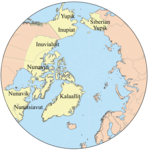
Iqaluit is the capital of the Canadian territory of Nunavut. It is the territory's largest community and its only city, and the northernmost city in Canada. It was known as Frobisher Bay from 1942 to 1987, after the large bay on the coast on which the city is situated. Its traditional Inuktitut name was restored in 1987.

The Inuit languages are a closely related group of indigenous American languages traditionally spoken across the North American Arctic and the adjacent subarctic regions as far south as Labrador. The Inuit languages are one of the two branches of the Eskimoan language family, the other being the Yupik languages, which are spoken in Alaska and the Russian Far East. Most Inuit people live in one of three countries: Greenland, a self-governing territory within the Kingdom of Denmark; Canada, specifically in Nunavut, the Inuvialuit Settlement Region of the Northwest Territories, the Nunavik region of Quebec, and the Nunatsiavut and NunatuKavut regions of Labrador; and the United States, specifically in northern and western Alaska.

Pond Inlet is a small, predominantly Inuit community in the Qikiqtaaluk Region of Nunavut, Canada, located on northern Baffin Island. To the Inuit the name of the place "is and always has been Mittimatalik." The Scottish explorer Sir John Ross had named an arm of the sea that separates Bylot Island from Baffin Island as Pond's Bay, and the hamlet now shares that name. On 29 August 1921, the Hudson's Bay Company opened its trading post near the Inuit camp and named it Pond Inlet, marking the expansion of its trading empire into the High Arctic.

Rankin Inlet is an Inuit hamlet on the Kudlulik Peninsula in Nunavut, Canada. It is the largest hamlet and second-largest settlement in Nunavut after the territorial capital, Iqaluit. Rankin Inlet is the regional centre for the Kivalliq Region.

Inuktitut, also known as Eastern Canadian Inuktitut, is one of the principal Inuit languages of Canada. It is spoken in all areas north of the North American tree line, including parts of the provinces of Newfoundland and Labrador, Quebec, to some extent in northeastern Manitoba as well as the Northwest Territories and Nunavut. It is one of the aboriginal languages written with Canadian Aboriginal syllabics.
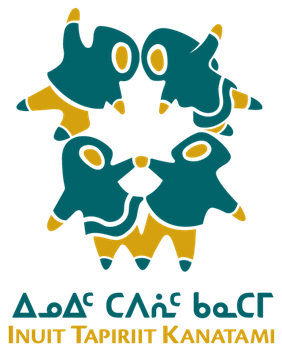
Inuit Tapiriit Kanatami, previously known as the Inuit Tapirisat of Canada, is a nonprofit organization in Canada that represents over 65,000 Inuit across Inuit Nunangat and the rest of Canada. Their mission is to "serve as a national voice protecting and advancing the rights and interests of Inuit in Canada."

Kinngait, known as Cape Dorset until 27 February 2020, is an Inuit hamlet located on Dorset Island near Foxe Peninsula at the southern tip of Baffin Island in the Qikiqtaaluk Region of Nunavut, Canada.
Peter Freuchen K. Ittinuar is a Canadian politician. He was the first Inuk in Canada to be elected as an MP, and represented the electoral district of Nunatsiaq in the House of Commons of Canada from 1979 to 1984.
Kenn Harper is a Canadian writer, historian and former businessman. He is the author of Give Me My Father's Body, an account of Greenland Inuk Minik Wallace, had a regular column on Arctic history in Nunatsiaq News and is a former landlord.
Lena Pedersen or Lena Pederson is a politician and social worker from Nunavut, Canada. In 1959, she moved from Greenland to the Northwest Territories and lived in Coppermine (Kugluktuk), Pangnirtung and Rae (Behchoko) before moving to Cape Dorset where she participated in the artwork sales of the West Baffin Eskimo Co-operative.
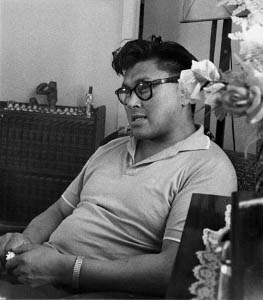
Abraham "Abe" Okpik, CM was an Inuit community leader in Canada. He was instrumental in helping Inuit obtain surnames rather than disc numbers as a form of government identification. He was also the first Inuk to sit on what is now the Legislative Assembly of the Northwest Territories and worked with Thomas Berger.
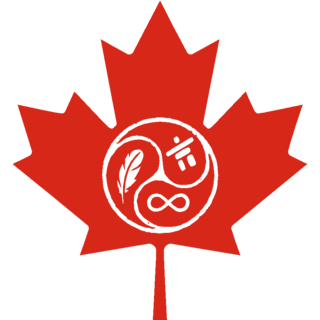
Disc numbers were used by the Government of Canada in lieu of surnames for Inuit. They were similar to dog tags.
Asger Rye "Red" Pedersen is a former territorial-level Canadian politician. In 1953, he got a job in the Canadian Arctic with the Hudson's Bay Company (HBC) at Cambridge Bay, Nunavut. In the following year, he was sent to Perry River (Kuugjuak) to assist Stephen Angulalik, the Ahiarmiut Inuit owner of the trading post, with the financial records, inventory and ordering, as Angulalik spoke no English. In 1957, Angulalik sold the Perry River post to the HBC and Pedersen was appointed manager. Angulalik returned to the post after resolving legal problems and worked alongside Pedersen; they became lifelong friends. He was, at one time, married to Lena Pedersen and their grandson, Calvin Pedersen was elected to the Legislative Assembly of Nunavut in July 2020.

Inuit are a group of culturally and historically similar Indigenous peoples traditionally inhabiting the Arctic and subarctic regions of North America, including Greenland, Labrador, Quebec, Nunavut, the Northwest Territories, Yukon (traditionally), Alaska, and Chukotsky District of Chukotka Autonomous Okrug, Russia. Inuit languages are part of the Eskimo–Aleut languages, also known as Inuit-Yupik-Unangan, and also as Eskaleut. Inuit Sign Language is a critically endangered language isolate used in Nunavut.
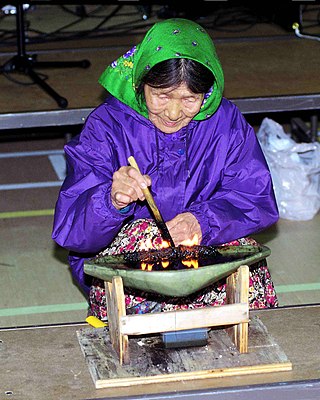
The Inuit are an indigenous people of the Arctic and subarctic regions of North America. The ancestors of the present-day Inuit are culturally related to Iñupiat, and Yupik, and the Aleut who live in the Aleutian Islands of Siberia and Alaska. The term culture of the Inuit, therefore, refers primarily to these areas; however, parallels to other Eskimo groups can also be drawn.

Simonie Michael was a Canadian politician from the eastern Northwest Territories who was the first Inuk elected to a legislature in Canada. Before becoming involved in politics, Michael worked as a carpenter and business owner, and was one of very few translators between Inuktitut and English. He became a prominent member of the Inuit co-operative housing movement and a community activist in Iqaluit, and was appointed to a series of governing bodies, including the precursor to the Iqaluit City Council.
The Eastern Arctic was an electoral district of the Northwest Territories, Canada, created in 1966 and abolished in 1975. The district was represented by Simonie Michael from 1966 until 1970, and then by Bryan Pearson from 1970 until its dissolution in 1975. As Michael was the first elected Inuk legislator in a Canadian province or territory, the Eastern Arctic district was the first electoral district in Canada to elect an Inuk representative.
Mary Ayaq Anowtalik is an Inuk artist based in Arviat, Nunavut, Canada, known for her stone carvings.
Alexina Kublu is a Canadian linguist, educator, translator, and jurist who served as the third Languages Commissioner of Nunavut and as the first Justice of the Peace in Nunavut.











